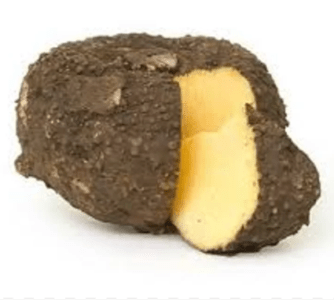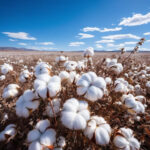In the agricultural landscape of India, the onset of April signals a crucial time for farmers as they gear up for sowing season. Amidst the myriad options available, one crop stands out for its potential to yield substantial profits—Jimikand, known as Olympic in several states of North India. In this article, we delve into the intricacies of Jimikand cultivation, exploring its profitability and the essential practices for successful farming.
Understanding the Significance of Jimikand Cultivation
With a significant portion of India’s population relying on agriculture for livelihood, the cultivation landscape has evolved over time. Traditional crops have made way for more lucrative options, with Jimikand emerging as a promising choice for farmers seeking substantial returns on their investment.
Insight from Agricultural Experts: Maximizing Profits through Jimikand Farming
Pramod Kumar, an esteemed agricultural scientist at the Regional Research Centre, emphasizes the profitability of Jimikand cultivation. He asserts that April marks the optimal time to commence cultivation, stressing the importance of a robust irrigation system and organic inputs for ensuring a successful harvest. With a cultivation cycle spanning 7 to 8 months, farmers can anticipate earnings ranging from 20,000 to 25,000 rupees per hectare—an impressive feat in comparison to traditional crops like wheat and paddy.
Selecting the Ideal Soil: A Foundation for Success
The cornerstone of successful Jimikand cultivation lies in soil selection. Farmers are advised to opt for sandy loam soil with adequate drainage and organic content. This facilitates optimal growth and development, setting the stage for a bountiful harvest.
Planting Practices: Nurturing Jimikand for Maximum Yield
Attention to detail is paramount during the planting phase. Farmers are instructed to sow Jimikand in pits, maintaining a distance of two feet between each plant. Each pit accommodates a portion of Jimikand, ensuring optimal spacing for growth. Additionally, vigilance is required to prevent any damage to the planted segments, ensuring the seamless progression of the crop.
Nutritional Requirements and Care: Sustaining Healthy Growth
The nutritional needs of Jimikand are crucial for its development. A balanced ratio of nitrogen, phosphorus, and potassium (100:60:80) is recommended, supplemented by regular fertilization. With proper care, Jimikand plants exhibit rapid growth, reaching maturity within 7 to 8 months—a testament to the crop’s resilience and viability.
Harvesting and Market Potential: Reaping the Rewards
After months of meticulous nurturing, the time arrives for harvesting. Jimikand boasts a remarkable growth rate, with yields multiplying significantly within the span of 8 months. Resistant to pests and animals, Jimikand offers a low-maintenance option for farmers. The harvested produce commands a respectable price in the market, further enhancing its appeal as a profitable venture.

Conclusion: Embracing Jimikand Cultivation for Prosperity
In conclusion, the cultivation of Jimikand presents a lucrative opportunity for farmers, offering substantial returns and minimal risk. With proper planning, adherence to best practices, and dedication, farmers can unlock the full potential of this versatile crop, paving the way for a prosperous future in agriculture.
Click Here For Agriculture Related Information
FAQs (Frequently Asked Questions)
- What makes Jimikand cultivation a profitable venture?
- Jimikand cultivation offers significant returns compared to traditional crops like wheat and paddy, making it an attractive option for farmers seeking higher profits.
- What are the key factors to consider during Jimikand cultivation?
- Soil selection, proper irrigation, and nutritional care are paramount for successful Jimikand cultivation, ensuring optimal growth and yield.
- Is Jimikand susceptible to pests and diseases?
- Jimikand exhibits resilience against pests and animals, reducing the need for extensive pest control measures and minimizing crop losses.
- What is the typical harvest timeline for Jimikand?
- Jimikand typically matures within 7 to 8 months after sowing, offering farmers a relatively quick turnaround on their investment.
- What is the market demand for Jimikand produce?
- Jimikand commands a respectable price in the market, making it a lucrative option for farmers looking to capitalize on its high demand and profitability.










